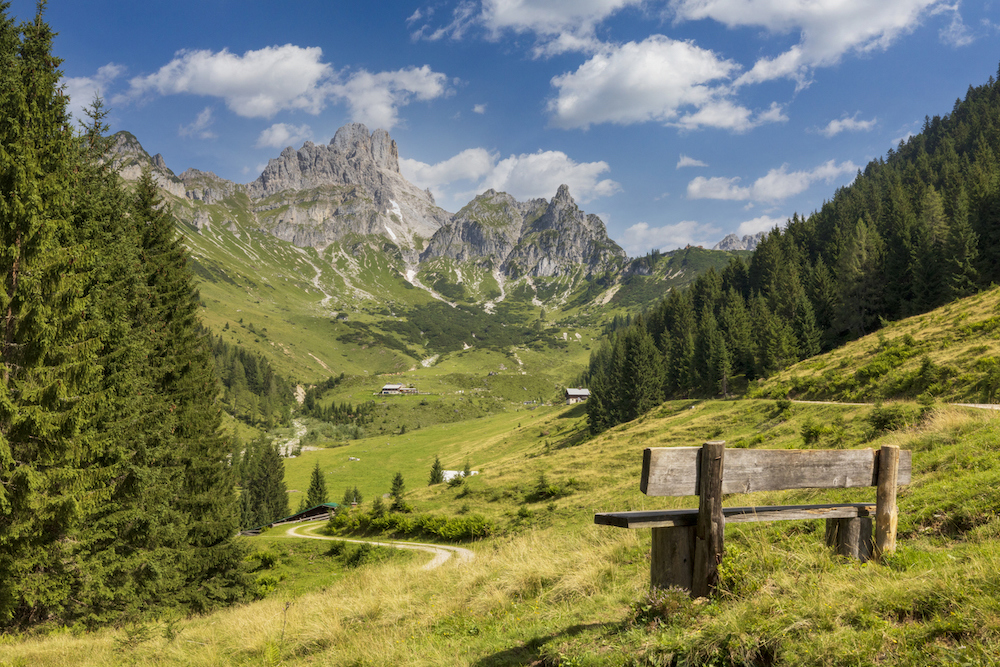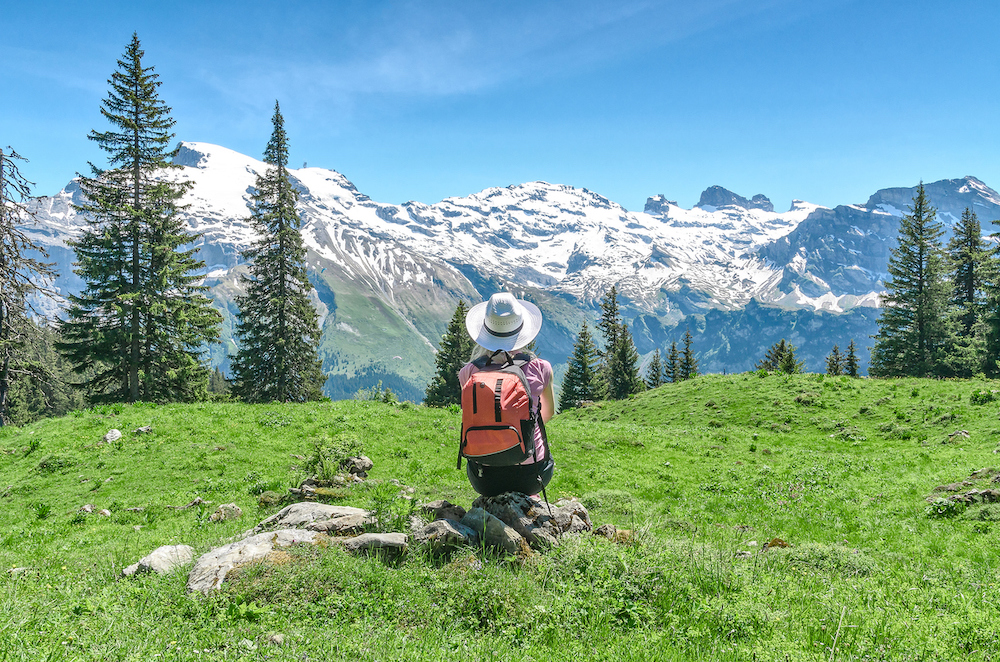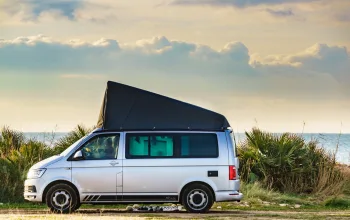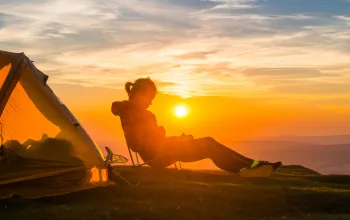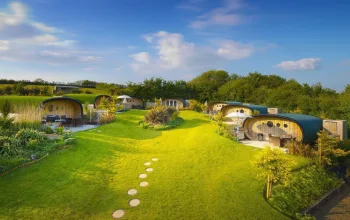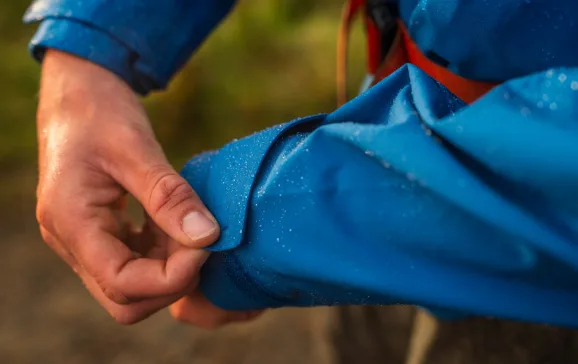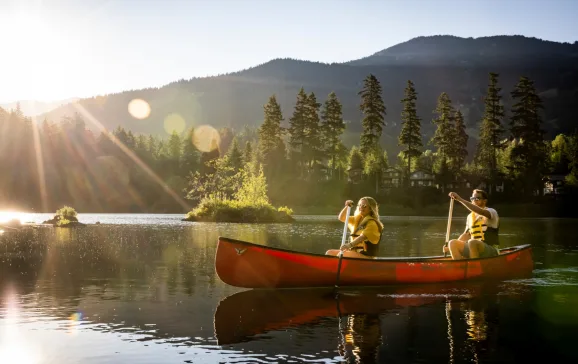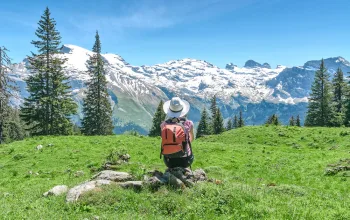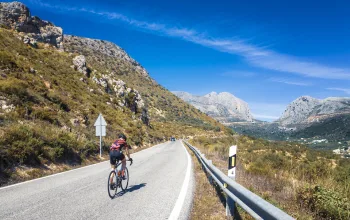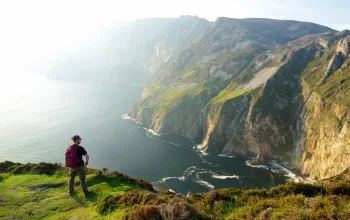With its shimmering alpine lakes, stunning wildflower meadows, panoramic mountain views, quaint villages, and oh-so-delicious cuisine (we’re talking to you wiener schnitzel!), Austria is a picture-perfect destination for a walking holiday.
Whether you’re a high-altitude hiker seeking a quad-busting mountain challenge or a leisurely walker looking for relaxing strolls amidst stunning scenery, Austria is home to thousands of well-signposted trails that cater for all motivations and experience levels. And no matter which path you choose, Austria’s rich cultural heritage make every step a journey through history.
It’s not always rainbows and butterflies though, so do make sure you pack for unpredictable weather. Even in summer, the Alpine weather can change fast and thunderstorms are a regular occurrence. Make sure you bring a proper lightweight waterproof jacket, warm layers, and good hiking boots/shoes as the trails can get pretty slippy after rain.
- Why Choose Austria for Your Walking Holiday?
- Where are the Best Walking Holidays in Austria?
- Multi-Day Walking Holidays in Austria | The Lechweg Trail
- Multi-Day Walking Holidays in Austria | Alpe Adria Trail, Stages 1 - 7
- Multi-Day Walking Holidays in Tyrol, Austria : The Eagle Walk
- Day Hikes in Austria | Gosausee to Adamekhütte, Dachstein Alps
- Day Hikes in Austria | The Schmittenhöhe Panorama Trail, Zell Am See
- Types of Walking Holidays in Austria
- Planning Your Walking Holiday in Austria
- Packing Essentials
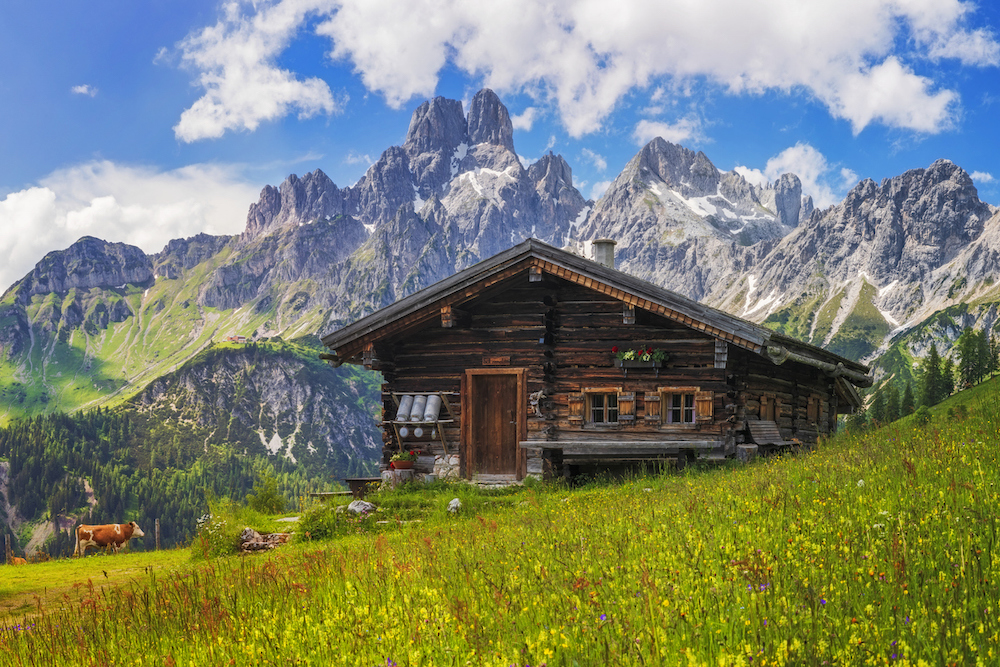
Why Choose Austria for Your Walking Holiday?
Earned your hiking stripes on a walking holiday in Ireland or Scotland and keen to take your boots further afield? There’s quite literally a trail for anyone in Austria so it’s a great option for those seeking to expand their hiking horizons beyond the UK.
The trails in Austria are well sign-posted and maintained
Trails are clearly marked with red-white-red waymarkers, detailed signposts, and difficulty ratings, making navigation relatively straightforward, even in remote areas. Whether you're exploring the Eagle Walk in Tyrol, following the Lechweg Trail, or trekking through the Dachstein Alps, you’ll find well-equipped rest stops, traditional mountain huts (Hütten) serving delish Austrian food, and heaps of incredible viewpoints.
Many trails also connect to Austria’s notoriously efficient public transport network, making multi-day hikes accessible and relatively easy to plan. Austria’s commitment to trail maintenance and accessibility ensures that hikers can focus on the journey, rather than logistics, making it one of Europe’s top destinations for walking holidays.
Austria’s extraordinarily rich history and culture
More than just an adventure through stunning landscapes, a walking holiday in Austria offers walkers the opportunity to get up close and personal with the country’s deep-rooted heritage and vibrant culture. Steeped in centuries of tradition, Austria boasts historic alpine villages, medieval castles, and baroque cities that provide fascinating stops along the way.
As you traverse Austria’s well-marked trails, you’ll travel through landscapes that have inspired composers like Mozart and Strauss, legendary mountaineers, and even emperors of the Habsburg dynasty. Pretty cool, huh?
Where are the Best Walking Holidays in Austria?
This really depends on the kind of walking holiday you’re after as there’s high alpine traverses, long-distance paths, meandering lakeside trails, and everything in between….
You could spend many lifetimes hiking here (if only!) so it can be tricky to know where to begin. We’ve highlighted some of our fave routes below – all extremely memorable in their own way – to help you take that all-important first step…
Los gehts!

Multi-Day Walking Holidays in Austria | The Lechweg Trail
The Lechweg Trail is one of Austria’s most stunning long-distance hikes that follows the Lech River from its source near Lake Formarinsee in Vorarlberg, Austria, to the Bavarian town of Füssen in Germany.
Covering 125 kilometers (ie 7-8 days of walking), this multi-day hike offers a mix of alpine scenery, deep gorges, waterfalls, picturesque villages, and one of the last wild river landscapes in Europe.
The route is well-marked, with gentle ascents and descents, and plenty of opportunities to stop in guesthouses, cafés, and mountain huts along the way. Ideal for fit beginners and experienced walkers alike, the many highlights include crossing Austria's longest suspension bridge – the 200m Holzgauer Hängebrücke - the Lech Gorge (Lechschlucht), and the Disney fairytale-esque Neuschwanstein Castle in Füssen.
Insider Tips for walking The Lechweg Trail
- Start Early - The Lechweg is becoming increasingly popular - especially around hotspots like Holzgauer Hängebrücke - so setting off early lets you enjoy the peace and quiet before the crowds peel themselves out of their sleeping bags!
- Break It Up to Suit Your Pace – The full 125 km trail is typically done in 7–8 days, but you can shorten it by starting in Lech am Arlberg or tackling it in sections.
- Look Out for Wildlife – The region is home to golden eagles, ibex, and marmots. Bring your binoculars and keep your eyes peeled, especially during those early mornings when the trails will be quieter.
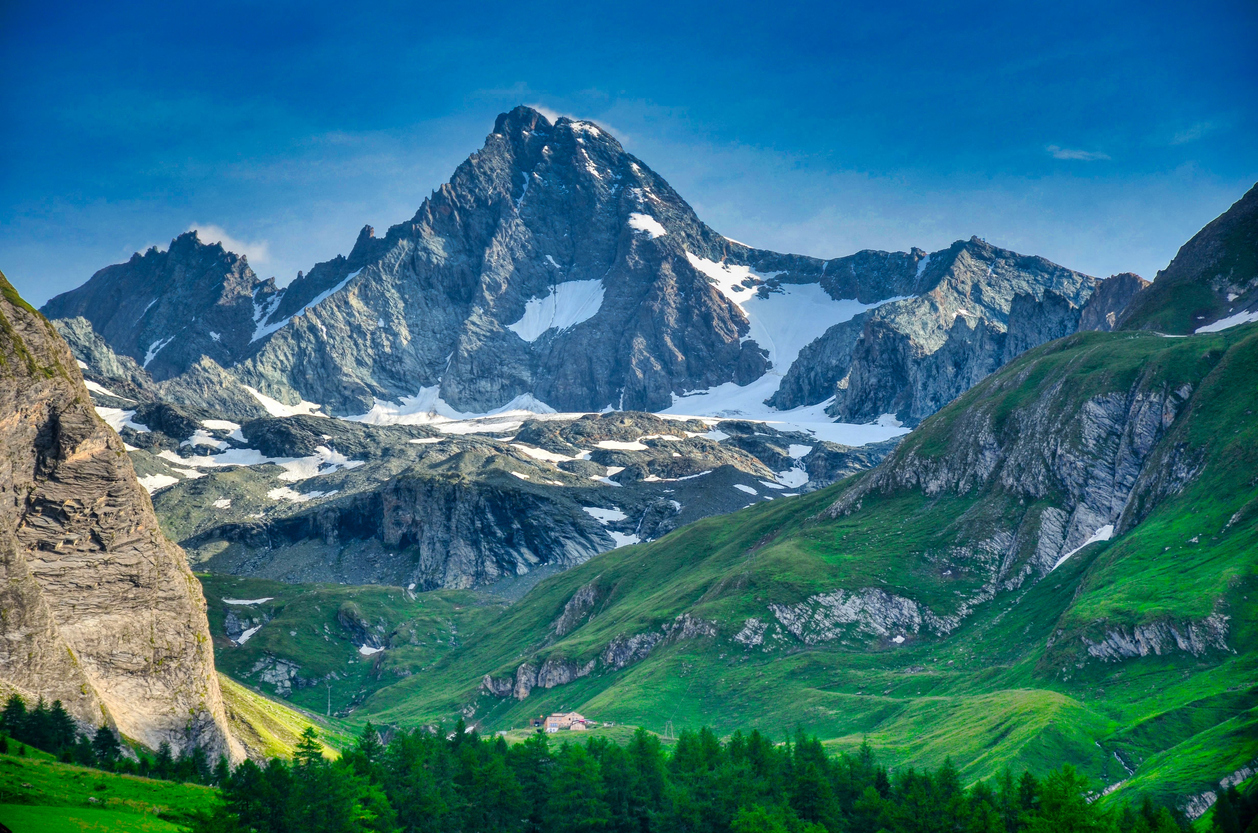
Multi-Day Walking Holidays in Austria | Alpe Adria Trail, Stages 1 - 7
Starting at the foot of Austria's highest peak, the Grossglockner, the Alpe Adria Trail is an incredible long distance hiking route that runs for over 750 kilometers, connecting Austria, Slovenia, and Italy.
The 150km Austrian section of the Alpe-Adria Trail covers stages 1-7 (there’s a whopping 43 stages in total!) and takes about 6-8 days to complete, depending on your speed/motivation. Fast hikers can probably knock this part off in 5-6 days, whereas those looking to take a more relaxed approach might want to leave themselves 9-10 days.
No matter how you tackle it, the Austrian section is an absolute stunner - arguably the most beautiful part of the entire trail. Weaving its way through the Carinthia province, the peaceful, well-marked trail takes hikers into some of the most beautiful and varied terrain in Europe. Think high-mountain scenery with alpine pastures, waterfall-filled canyons, cool pine forests, rolling hills and valleys.
Insider Tips for walking the Alpe-Adria Trail
- Don't miss Mallnitz (Stages 6 & 7) - this alpine village is an eco-tourism hub and gateway to the Hohe Tauern National Park – one of Europe’s largest protected wilderness areas
- Use the Luggage Transfer Service – If you prefer to travel fast and light, it’s well worthwhile using one of the official baggage transfer services that are available along the route
- Explore Raggaschlucht (Stage 5) - a deep, waterfall-filled gorge with wooden walkways clinging to its rocky walls. The roaring water and moss-covered cliffs create a magical, almost otherworldly atmosphere the perfect mid-hike adventure!
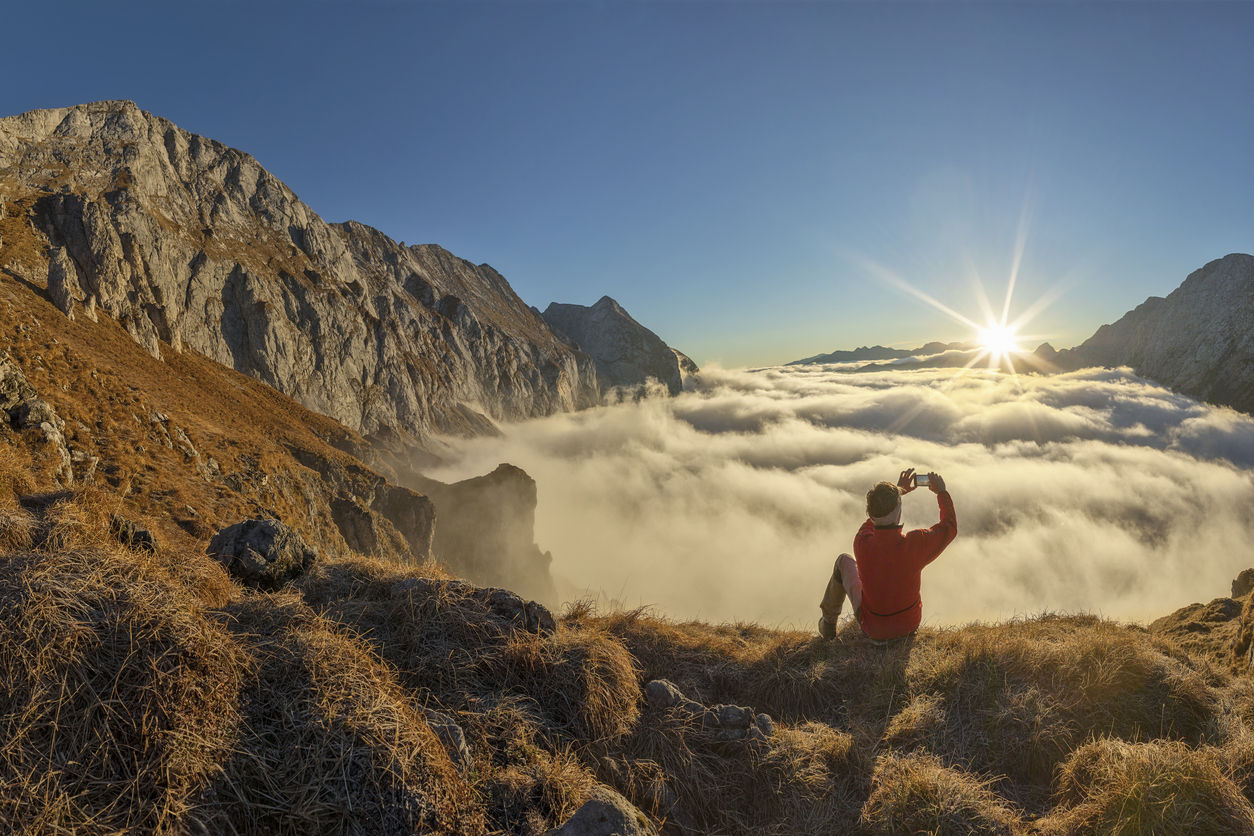
Multi-Day Walking Holidays in Tyrol, Austria : The Eagle Walk
One of Austria’s most legendary long-distance hiking trails, the 413km Eagle Walk stretches across the entire Tyrolean region from St. Johann in Tirol in the east to St Anton am Arlberg in the west.
Named after its shape, which represents an eagle in flight, the trail encompasses 33 stages and takes hikers through some of the most breathtaking mountain scenery in Austria, combining snow-capped peaks, high alpine meadows, deep lush valleys and historic villages.
The full route is a serious undertaking and takes anywhere from in the region of 3-4 weeks to complete. Little wonder then that many hikers opt to break it down into specific sections. If rugged trails and jaw-dropping mountains are your thing then we’d recommend focusing on the western section of the route – Innsbruck to St. Anton (18 stages). It’s more remote, there’s fewer crowds than on the eastern trails and the views are absolutely to die for!
Insider Tips for walking The Eagle Walk
- Don’t miss the Highline 179 suspension bridge (near Reutte on stage 17) – one of the world’s longest pedestrian suspension bridges, it spans a mahoosive 406 meters over the Fern Pass valley
- The remote Lechtal Alps - If you like to hike on the wild side then the Lechtal Alps (stages 21 and 22) have to be on your list. The 500m climb to the Hanauer Hutte is a properly beautiful, lung-busting mountain adventure and the views from the hut are amazing. The food is pretty good too!
- The Final Stretch - St. Anton am Arlberg. Hike over high-mountain passes and past crystal clear glacial lakes, before finishing your journey with a well-earned beer (or five?!) in St Anton – one of the most famous towns in the Alps.
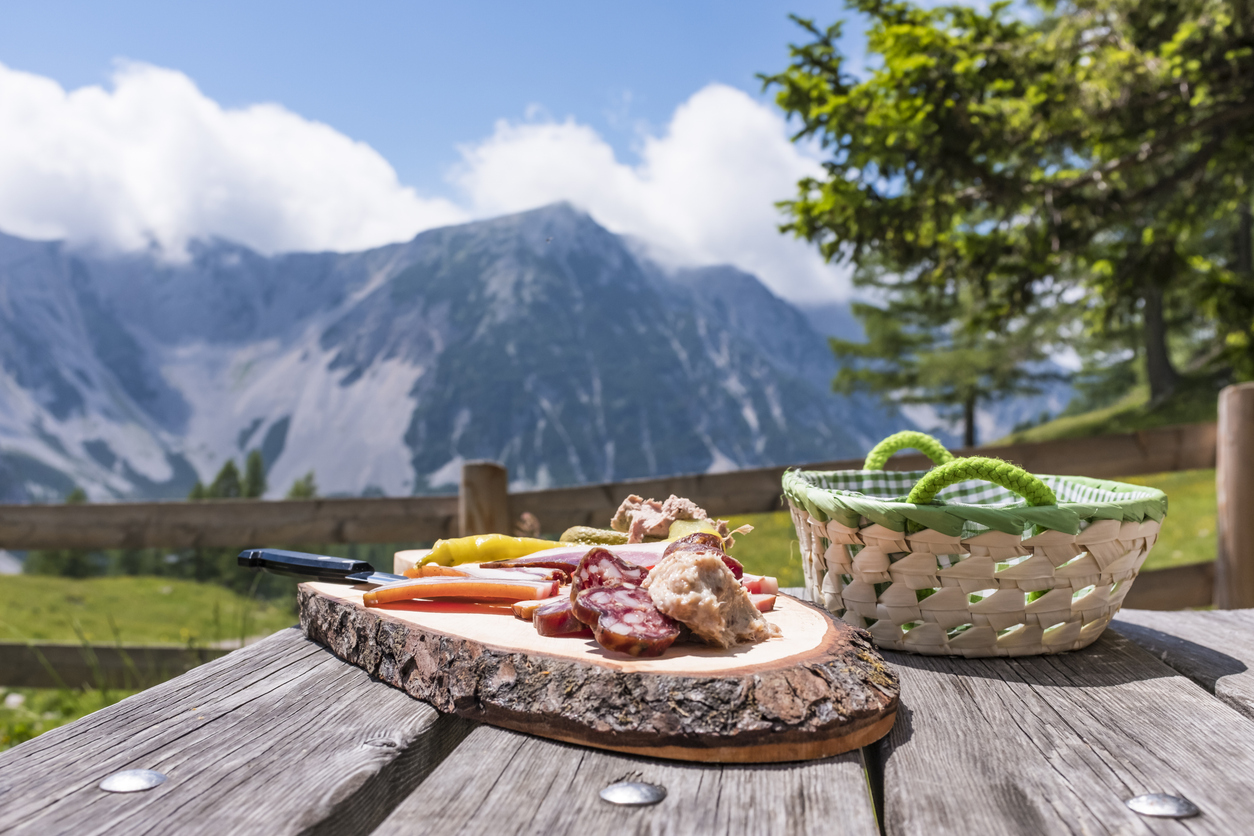
Day Hikes in Austria | Gosausee to Adamekhütte, Dachstein Alps
If you only have one day to experience the Dachstein Alps, the hike from Vorderer Gosausee to Adamekhütte (2,196m) is a truly amazing itinerary.
This 18km, 1,200m+ route takes you on a proper Alpine journey past crystal-clear lakes, through pine forests, and up onto remote alpine pastures with stunning views of the Dachstein Massif.
The trail starts at Vorderer Gosausee – widely considered to be Austria’s most beautiful lake (hello Instagram!) – and makes its way to Adamekhütte, a traditional mountain hut with up-close views of the Dachstein glacier and super tasty pastries! Originally the home of the Austrian Alpine Club, it’s the place to be for mountaineers, hikers and climbers which really adds to the awesome alpine hut vibe. Stay for the sunset/sunrise or head back down the valley to complete the adventure in one day.
Insider Tips for walking from Vorderer Gosausee to Adamekhütte
- Start Early – The first part of the trail (around Gosausee) is popular with day-trippers, so starting before 8am ensures a quieter experience.
- Bring Plenty of Water - There are no water refill points until you reach Adamekhütte, so carry at least 1.5–2 litres in your pack. You might find a few small streams along the way but they're not always reliable in mid-to-late summer.
- Call Ahead – The Adamekhütte serves traditional Austrian food (Kaiserschmarrn, soups, and hearty mountain meals), but it can get busy on weekends. If you’re planning to stay overnight, a reservation is essential.
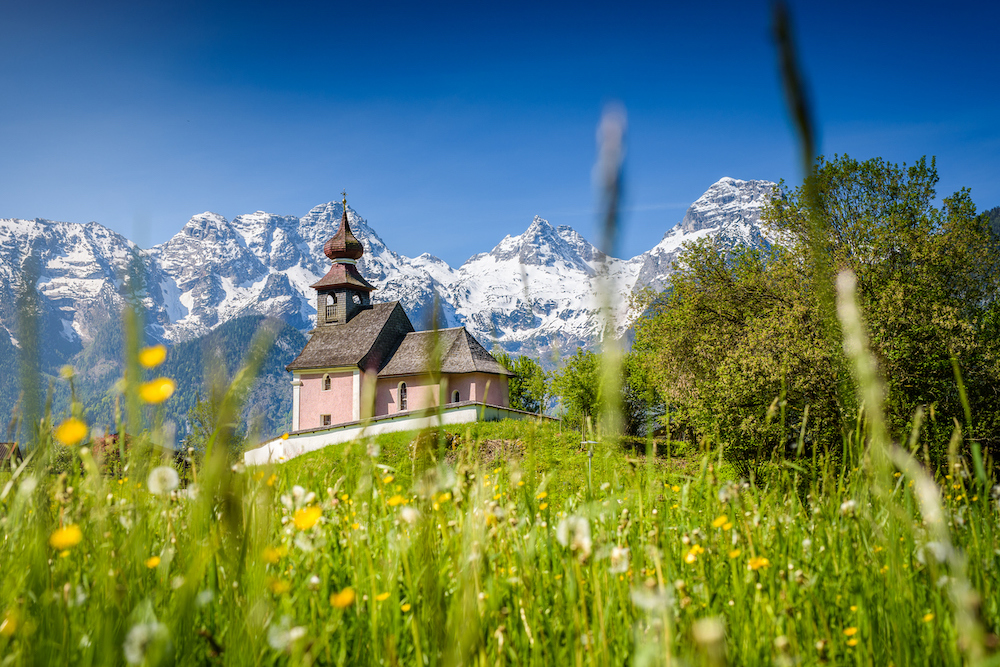
Day Hikes in Austria | The Schmittenhöhe Panorama Trail, Zell Am See
This 6km route is ideal for folks looking for a shorter, relaxing day hike that can still deliver big time mountain views.
The adventure starts in Zell Am See with a ride up the Schmittenhöhebahn cable car to 1,965m – no sweaty ascent required! From the top station you’re treated to 360 degree panoramic views of the Alps, taking in 30 summits above 3,000m, including the Grossglockner - Austria’s highest mountain (3,798m).
The trail then follows a gentle ridge with plenty of well-positioned benches to rest and take in the views of the Kitzbühel Alps, the Hohe Tauern, and the Wilder Kaiser range. There’s plenty of opportunity to refuel along the way with the Pinzgauer Hütte and Sonnkogelhütte both offering tasty treats and incredible terrace views.
Insider Tips for walking the Schmittenhöhe Panorama Trail
- Don't Miss Elisabeth Chapel – this beautiful little mountain chapel offers walkers a peaceful spot to rest and reflect
- Time your visit for sunset—Schmittenhöhe is one of the best places near Zell am See to watch the sun go down!
- Detour to the High-Altitude Art Trail - Along the way, you’ll find “Kunst am Berg” (Art on the Mountain)—a series of sculptures by international artists, blending art with nature.
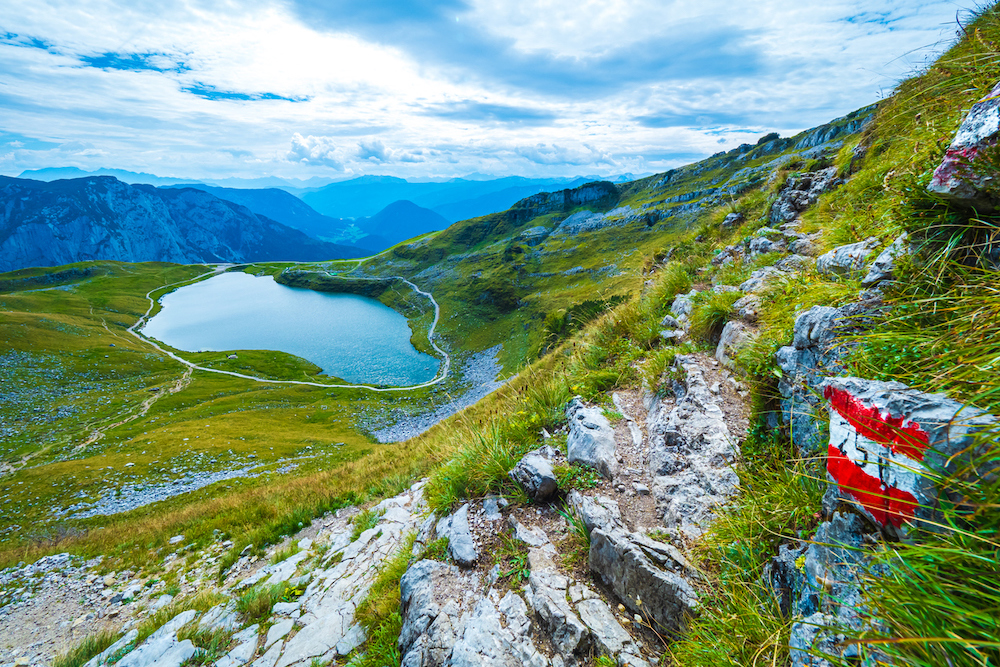
Types of Walking Holidays in Austria
Self Guided Walking Holidays
Austria’s well-marked trails, reliable infrastructure, and stunning alpine scenery make it an ideal destination for a self-guided walking holiday. Whether you’re an experienced hiker or prefer a more leisurely pace, Austria’s network of maintained paths, detailed maps, and GPS-supported routes help you find your way.
Numerous resources make planning easy - Austria’s official tourism website, regional hiking portals, and local Alpine clubs provide route information, elevation profiles, and safety tips. Digital tools like Komoot, Outdooractive, and Bergfex offer GPS navigation, user reviews, and offline maps to keep you on track. Many routes also feature luggage transfer services, allowing you to walk unburdened while your gear awaits at the next mountain hut or guesthouse.
Guided Walking Holidays
A guided walking holiday in Austria is perfect for those looking to immerse themselves in the country's rich history, culture, and natural beauty. Whether you're new to hiking or simply prefer a more structured adventure, a guided experience offers peace of mind, especially when navigating remote or rugged terrain.
Companies like The Natural Adventure and Hut to Hut Hiking Austria provide small group tours with everything included: carefully selected accommodations, secluded local trails, luggage transfers, and authentic Austrian cuisine. These tours take you through some of the most spectacular and less-visited parts of Austria, from alpine meadows to picturesque villages, ensuring you experience the country's true charm without the hassle of logistics.
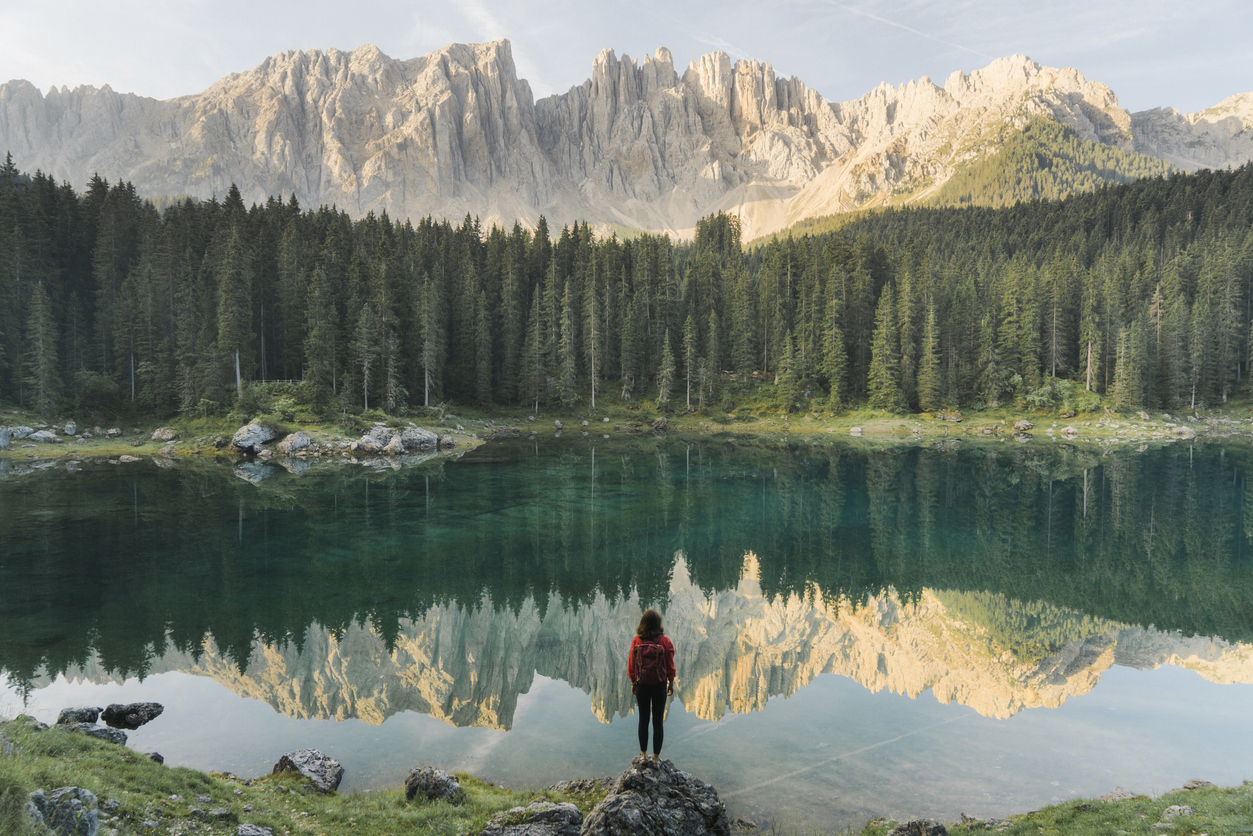
Planning Your Walking Holiday in Austria
Choosing the Right Time to Visit Austria
This depends on the type of experience you’re after. For a classic alpine experience, the ideal months are from June to September, with late spring and early autumn offering mild temperatures and fewer crowds.
Peak summer (June to August) is perfect for higher-altitude hikes, as the weather is warmer, the trails tend to be clear of snow, and most mountain huts are open. However, it can be busier, especially in popular areas like the Salzkammergut and the Dolomites.
Where to Stay in Austria
There’s a wide range of accommodation options to suit every hiker's needs, from simple mountain huts (Almhütten) to luxury hotels in picturesque villages. Most hiking regions are well-equipped with comfortable guesthouses and family-run inns, where you can unwind with a cold beer and a homemade cake after a tiring day on the trail. Many offer half-board options, including carb-loaded evening meals and packed lunches for the next day’s adventure.
For those seeking a more authentic experience, staying in a traditional alpine hut for a night or two is highly recommended. These magical high-altitude huts provide a glimpse into Austrian mountain culture and are often located in remote, peaceful areas with panoramic views.
If you prefer something more luxurious, spa resorts in places like Zell am See or Bad Gastein offer the perfect post-hike relaxation.
How to Prepare for a Walking Holiday in Austria
Failing to prepare is preparing to fail…. Get this bit right and you’re in for the adventure of a lifetime!
Austria’s hiking terrain varies greatly, so it's essential to choose the right routes based on your fitness level and experience. Make sure to bring good-quality hiking /shoes (well worn in!) and weather-appropriate clothing, as conditions can change rapidly in the Alps. A lightweight waterproof jacket is a non-negotiable.
Most hiking routes are well-marked, but it’s still a good idea to carry a map or GPS device, and apps like Komoot or Outdooractive are perfect for real-time navigation. Luggage transfer services are available for many multi-day hikes, allowing you to travel light and focus on the trail. Be sure to book accommodations in advance, especially during the high season, to secure the best spots.
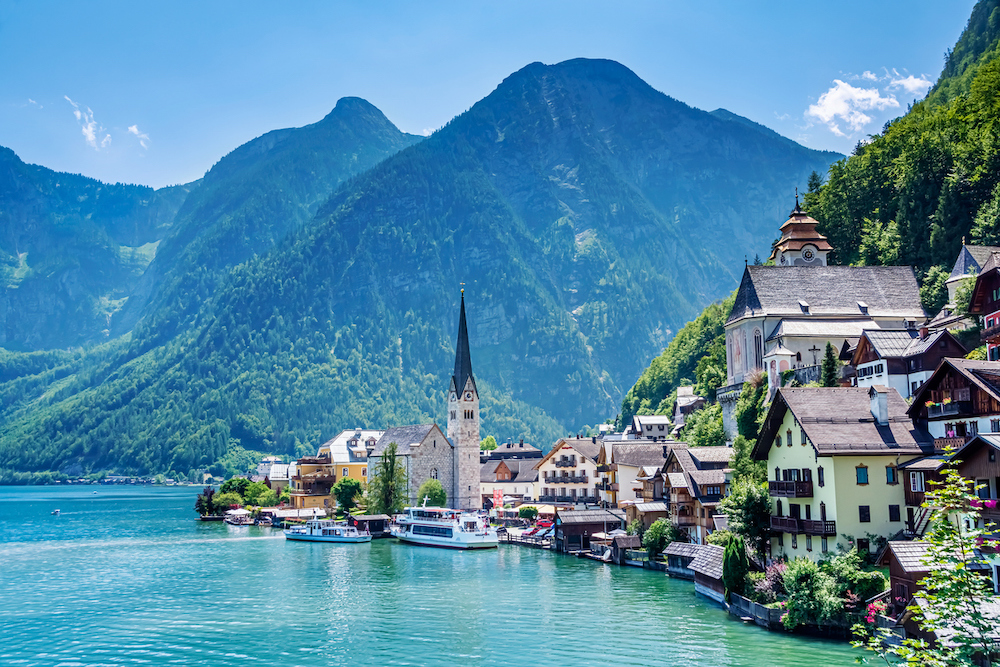
Packing Essentials
When preparing for a walking holiday in Austria, it's important to pack for the varied alpine weather, which can change quickly, especially in the mountains.
Waterproof Jacket – A must-have, as rain showers are common. Bring two jackets—a lightweight rain jacket for light showers and a heavier, more robust waterproof jacket for serious downpours and wind.
Waterproof Trousers – These are essential to keep you dry, especially when trekking through wet meadows or snowy sections at higher altitude. Look for ones that are easy to pull over your walking boots.
Walking Trousers – Opt for lightweight, technical, and breathable trousers with plenty of pockets for practicality.
Lightweight Insulated Jacket – For chilly mornings and summit breaks. Even in summer, temperatures can drop quickly at higher elevations.
Hybrid Mid-Layer – A wind-resistant, breathable jacket or fleece that provides extra warmth and protects you from wind and unpredictable weather.
Baselayers and Underwear – Moisture-wicking, quick-drying, and breathable fabrics like merino wool or synthetic materials (avoid cotton) to keep you comfortable and stink-free!
Walking Boots or Approach Shoes – Make sure your boots are waterproof, broken-in, and offer good ankle support, especially for rocky and uneven alpine paths.
Socks – Merino wool socks are the best for keeping your feet warm, dry, and comfortable. Choose moisture-wicking, cushioned options to prevent blisters.
Backpack – The size depends on the duration of your hike. If you're using luggage transfer services, a small day pack will suffice, but if camping or carrying extra gear, consider a larger hiking backpack with a rain cover.
Hat and Gloves – Pack two sets: a lightweight, breathable set for warmer days and a warmer set for cold evenings and higher-altitude hikes, where temperatures can dip.
Survival Shelter – Handy for emergency situations or for shelter when you're taking a break in exposed spots. A compact emergency bivvy is a good shout too.
Walking Poles – Highly recommended, especially for steep sections, rocky terrain, and areas with uneven ground. They help with stability and reduce pressure on the knees.
Headtorch – Essential, especially for longer days or if you’re hiking in areas with limited daylight. Also useful at mountain huts for finding your way to the loo in the dark!
Gaiters – Optional but useful for keeping wet grass, snow, or mud from getting into your boots, particularly when trekking in boggy or alpine environments.
Maps/Guidebook – A detailed map or a guidebook specific to the Austrian region you’re hiking. If hiking more remote areas like the Dachstein Alps, having clear navigation will keep you on track.
Phone with Power Bank – Useful for navigation, capturing content, or in emergency situations. Carry a portable charger to ensure your phone stays powered.
Monocular/Binoculars – Great for birdwatching or spotting wildlife such as eagles, marmots, and ibex, which are common in Austria’s mountains.
Tick Removal Tool – Ticks can be found in some areas, especially in meadows and forests. Always carry a tool for safe removal
READ NEXT: Walking Holidays in Ireland
